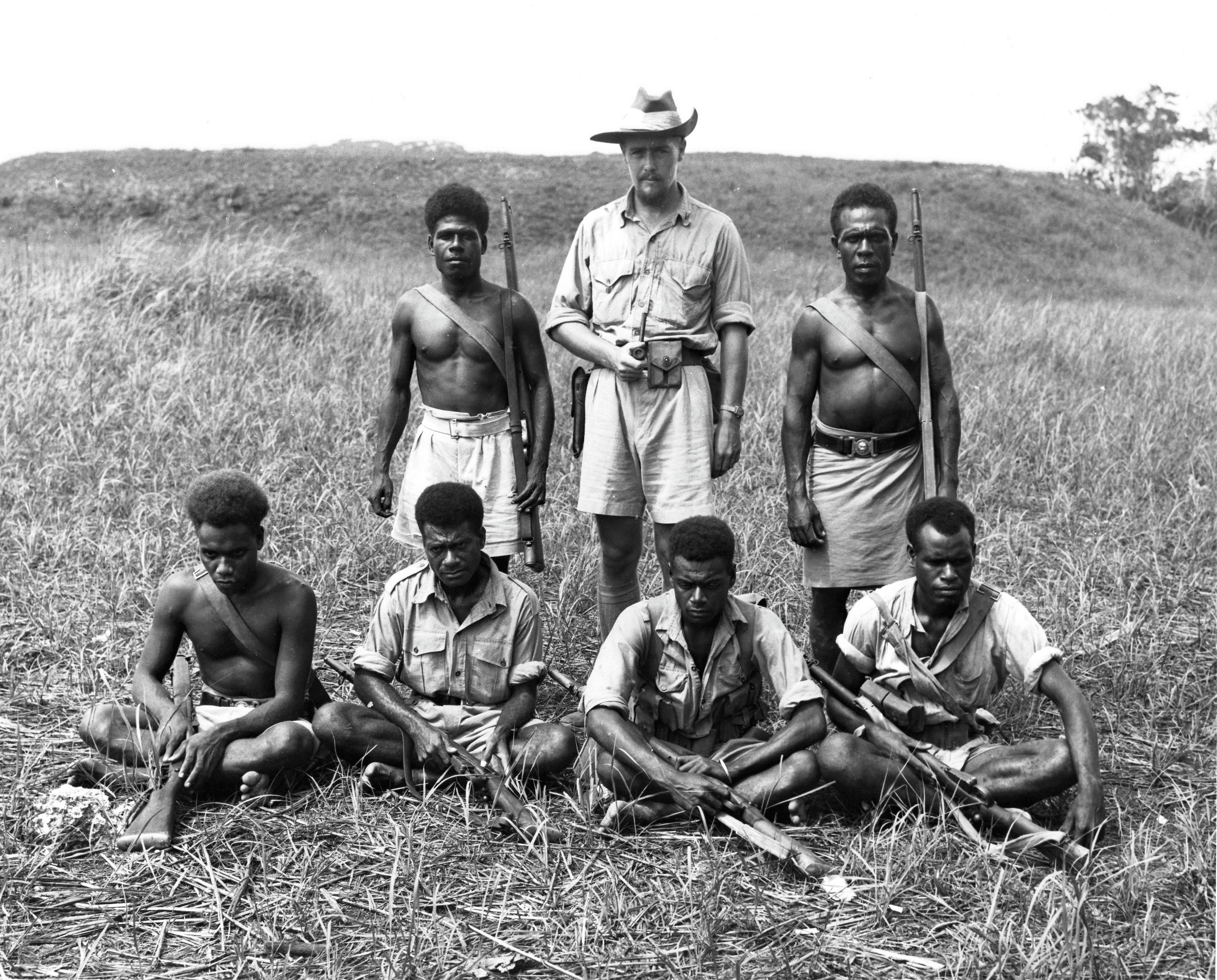
Dispatches
By Liz Gilmore Williams


Marin Clemens
Marin Clemens and the British Solomon Islands Protectorate Defense Force
Saving the Pacific: Marin Clemens and the British Solomon Islands Protectorate Defense Force
Martin Clemens, district commissioner of and volunteer in the Defense Force for the British Solomon Islands Protectorate, left the northern coast of Guadalcanal and headed for Lunga Point. He had heard radio reports of a Japanese naval task force bound for the southern Solomons. From Lunga Point, Clemens spied Japan’s elite Special Naval Landing Force embarking on the nearby islands of Tulagi and Gavutu-Tanambogo.
A 27-year-old Scotsman, Clemens also served as lieutenant in the Royal Australian Navy. His main duty was to remain behind enemy lines to spy for the Allies in the southwest Pacific as part of a far-reaching network of coast watchers. In doing so, he risked execution by the Japanese.
The coast watchers consisted of colonial officials, planters, and missionaries organized into a web of field stations by Lt. Cmdr. Eric Feidt of the Royal Australian Navy. By mid-1941, 64 such stations were equipped with radios capable of Morse code and voice communications. Spanning an area of 500,000 square miles, the network consisted of 800 agents by 1942. Supporting the coast watchers were scouts native to the area, including local police or defense force troopers who blended in with the population, thus arousing little interest in their activities.
Clemens reported the arrival of the Japanese on Guadalcanal through a chain of stations to Allied intelligence officers in Australia. Then, he and his scouts established an observation point above Lunga Point to watch enemy warships and the activities of new Imperial Navy seaplane base on Tulagi. On July 1, 1942, he reported that the Japanese had begun building an airstrip at Lunga Point. This led American forces to invade and convert that airstrip into Henderson Field.
As the Japanese stepped up their efforts, Clemens delved further into the jungle to avoid detection. Nonetheless, the enemy learned about the operation of a clandestine radio on the island, forcing Clemens to move often. No longer able to observe the progress of the airstrip, Clemens sent scouts to join the labor force there and report back to him.
Soon after the U.S. Marines landed on Guadalcanal, a gaunt and bearded Clemens with his bedraggled scouts entered the American camp waving a British flag. Throughout the campaign for Guadalcanal, they continued to provide vital intelligence to General Vandegrift at First Marine Division headquarters. “We relied heavily on information brought to us by Martin and his charges,” wrote Vandegrift, who credited them with supplying the “margin of victory’ in some instances. Adm. William Halsey, U.S. Navy Commander, South Pacific, offered even higher praise: “The coast watchers saved Guadalcanal, and Guadalcanal saved the Pacific.”